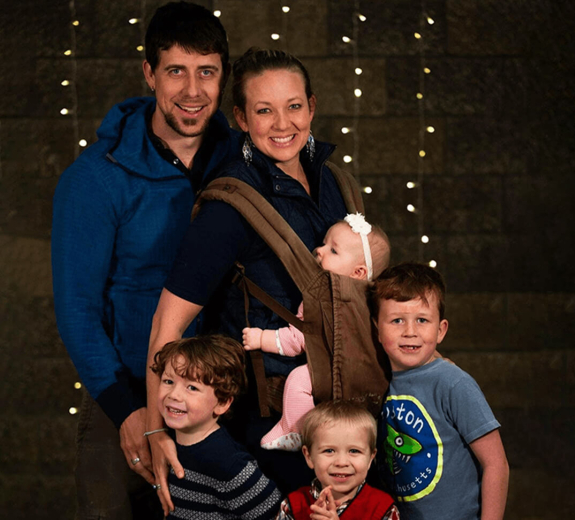
How A BRI Nurse Is Helping Type 1 Diabetes Patients — and Her Family — Cope With COVID-19
In February, Dana VanBuecken, ARNP, was living her normal life as a clinical research nurse and mother of four who lives with type 1 diabetes (T1D). But when COVID-19 swept through Washington state, Dana took on even more roles: A stay-at-home mom, a homeschool teacher and a phone triage nurse — all while being part of a population that’s especially vulnerable to the virus.
Like it has for so many of us, the pandemic has flipped Dana’s world upside down. But she’s pushing forward and finding new ways to support her family, research participants and COVID-19 patients. Along the way, she’s unearthed a few tips that can help other T1D patients, parents and families learning to cope with COVID-19.
“There are a lot of people who are worried right now, and with good reason,” Dana says. “But the healthcare community has come together to fight this virus. And if everyone takes a few simple actions, we can all do our best to stay healthy.”
Navigating COVID-19 with T1D
As a nurse practitioner in the Diabetes Clinical Research Program at Benaroya Research Institute at Virginia Mason (BRI), Dana helps people with T1D who are participating in studies of promising new therapies. She educates them about available trials and monitors participants while they are receiving therapies.
"Most participants come in frequently,” she says. “We get to know each other and look forward to catching up. Now that we can't meet in person, we've had to pause some studies and find ways to check-in via phone or video call."
Many study participants are also contacting her team with worries about how the virus could affect them. People with T1D are not more likely to get the virus, but they are more likely to experience severe symptoms or complications if they do get it.
“T1D is anxiety-inducing any day, and the threat of the virus makes that worse,” Dana says. “But I tell people to follow a few simple rules: Wash your hands, practice social distancing and have a two-week supply of insulin and a sick-plan in place, in case you need to self-isolate.”
For people with T1D, Dana says one of the best weapons is to closely monitor their blood glucose.
“We have reason to believe that if you do get the virus, the better your A1C, the better your body will be able to fight it off,” she says.
Advising People About Being Tested for COVID-19
Dana is also taking on extra hours helping BRI’s partner hospital, Virginia Mason Medical Center, respond to an influx of calls from people worried about symptoms that could be caused by COVID-19. Dana helps callers determine if they should be tested and schedules tests for those who need them. This has helped hundreds of people know if, when and how to get tested, before coming to the hospital — keeping hospitals from getting overcrowded and making sure people who are sick come in contact with as few people as possible.
“Virginia Mason needs all hands on deck to answer phones and direct people,” Dana says. “And if we reach a point where nurses like those with ICU credentials, which I don’t have, need to get off the phones and treat patients, I’ll spend more time taking calls, to free up their time. We all need to do our part so that everyone who needs care will be able to access it.”
Wash Your Hands, Love Your Neighbor
At home, Dana, her husband Nich and their nanny support their kids, ages 1-8, by taking things one day at a time.
“We’re doing online learning through Scholastic,” Dana says. “We’re loving watching Reading Rainbow. And we’ve done a lot of fun projects like building a bottle rocket and a hovercraft.”
When most adults are feeling anxious and uncertain, reassuring kids is no small task. But the VanBueckens have a simple strategy.
“We tell our kids to wash their hands and love their neighbors,” she says. “We tell them it's important because even if the virus isn’t very risky for them, they need to think of our 94-year-old neighbor — it would be really bad for him. We need to think about our community, and how we can keep everyone safe.”
The key to solving this pandemic, Dana says, lies in simple science behind social distancing: Every person who gets the virus spreads it to a few people. And they spread it to a few more people — and soon, thousands are sick. But if we don’t gather with others for the time being, we’re much less likely to catch or spread the virus.
“Many of us are missing our friends, families, and coworkers,” Dana says. “But the best thing we can do for them is to stay apart, because social distancing can help curb the virus. This too shall pass. But right now, we need to think of our communities — and staying home is the best way to stop this thing.”
Immuno-what? Hear the latest from BRI
Keep up to date on our latest research, new clinical trials and exciting publications.


